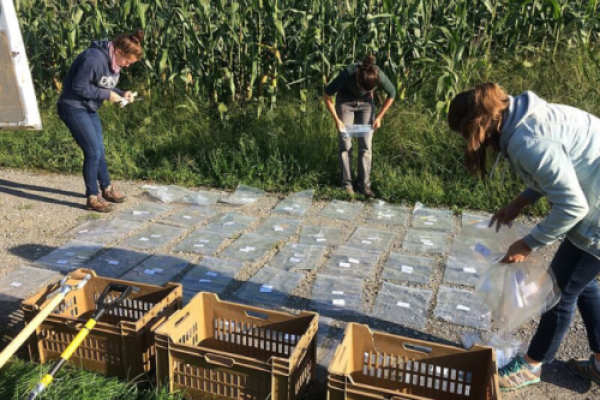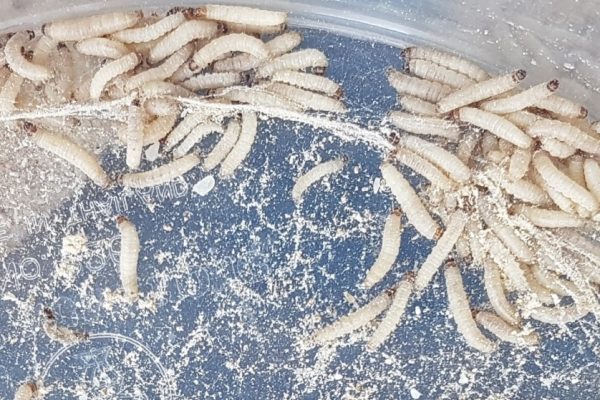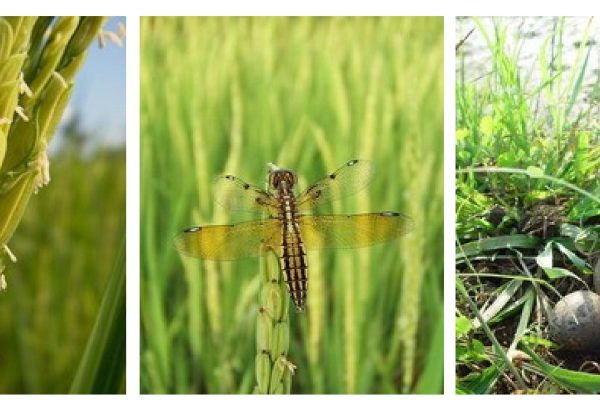
These are tips learned from real experience of farmers from Green Net and our friends around Thailand and the world.
Using urine to control field rats
This is a technique I learned from some Filipino farmer friends. The are organic rice farmers with Pecuaria Development Cooperative who came for a learning visit on organic rice chain with Earth Net Foundation.
The technique is simple. Field rats don’t like stinky human urine. What you do is collect human urine, let it ferment for a few days and then apply it (can use a watering can) around the rice fields where there are rat trails. Apparently the rats don’t like the smell and move on. (I don’t blame them).
According to Filipino belief, killing the rats, only means that they will come back in the future in greater populations. So it is better to just get them to move on.
My Thai farmer friends at the same meeting said, “You know our technique?” The answer, barbequed field rat is quite popular in much of the country.
Michael Commons, Earth Net Foundation
Using apple snails as weed control in rice fields
This is a technique I learned from Ms. Maria Marilyn Amoroso Jollado, an organic rice farmer with Pecuaria Development Cooperative in the Philippines.
In Thailand most rice farmers consider apple snails (known locally as cherry snails due to their bright pink eggs) to be a pest. This is particularly the case for rice farmers growing rice year-round without any rotation or fallow. Non-organic farmers use strong chemicals to kill these snails, chemicals that also kill fish and shrimp and other beneficials. So it was refreshing to hear of a problem being a solution if applied correctly.
Maria has observed that the snails only eat very young rice plants, normally of less than 10 days growth. After this they won’t attack the rice, however they will happily eat other sprouting weeds in the rice fields. So she collects a number of apple snails from neighboring fields or wherever she may find them and puts them in her rice fields when the grains have sprouted for about 2 weeks. The snails then go to work to control weeds in her rice fields not bothering the rice.
I think this is a beautiful example of keen observation of nature by an organic farmer and its application.
For the record I don’t know any organic farmers in Thailand using this technique, however the snails have become less of a problem for 2 reasons. One is that if you collect them and ferment them they make a good quality nitrogen rich liquid fertilizer. The second is that Asian Cranes have grown in population and they do an excellent job of controlling snail population while pose no hazard to the rice crops.
Michael Commons, Earth Net Foundation
Integrated Farming of Rice/ Soybeans in a Fruit Orchard
I saw this technique being applied by a Green Net organic farmer member in Amphur Phrao, Chiang Mai. She did not have any rice fields, but she has a nice orchard of mango trees and longan. She modified the draining canals into strips of rice field/ soybeans. Like many other organic farmers in the Chiang Mai area, she does this rotation of rice in the wet season, followed by soybeans in the dry season. I found this to be a nice and creative example of integrated cropping. Now she may not be selling her organic rice, but she has more than enough to feed her family and she has organic fruits and soybeans to eat and sell on top. Michael Commons, Earth Net Foundation
Here you can see the soybeans growing nicely between mango trees. Photo taken Feb 2011 by Pichai Samrongsang
| Attachment | Size |
|---|---|
| Integrated rice and mango.jpg | 84.43 KB |
How to Make Microorganism Bombs (MO Bombs)
Microorganism Bombs Recipe
Recipe makes 400- 500 tennis ball side “Microorganism Bombs” good for improving water quality of spoiled water with too much BOD. (Biological Oxygen Demand)
Recipe from Piya Boonsri, Joko Learning Institute, Nan / Translation by Michael Commons, Earth Net Foundation, Thailand
Clay (from rice field) 50 Kgs (Could use other topsoil with some clay content)
Fine Rice Bran 20 kgs
Course Rice Bran 10 kgs
M.O. Starter 1/2 cup (Microorganism Starter- typically coming from collected forest microorganisms- see recipe elsewhere)
Molsasses 1/2 cup (Could use another form of sugar such coconut syrup or brown sugar)
Water (about 20 litres depending on need) – should be clean water, can be well, rain water or tap, however tap water with high chlorine should be allowed to sit for a period to reduce chlorine content.
Methodology
Break clay/ soil down into powder
Add fine bran
Add course bran
Mix MO with Molasses – then mix with water
Water with the MO mixture (can use watering can)
Mix together well- adding more of the MO mixture until
When moist but not wet it is good to go (Can test by sweezing in one’s had if some moisture comes out it is ready)
The make into balls (normal size is tennis ball, but depends on needs)
Keep in the shade, cover with cloth or yute sack
After see fungus clearly on the balls, they are ready to use (normally 1-5 days in Thai conditions)
Can then keep 15- 20 days after this effectivity is going down.
- These MO bombs are now being used and produced to treat stale/ putrid water in flooded areas
- They are also good for fish ponds, water treatment ponds, on any area where the water is smelling bad due to too much organic matter (BOD) in the water. The microorganisms help to consume this organic matter improving the water quality.
Tumeric for Nightshade Crops
Prevent root fungus for chilis, tomatoes, and eggplants with Tumeric
I learned of this trick from Mr. Radik, a member of the VIGUR organic group in Malang, East Java, Indonesia Written up by Michael Commons
In wet conditions, like we find in Thailand and Indonesia, root fungus is a common problem for nightshade crops. Mr. Radik showed this very simple method, using tumeric, an herb widelyavailable in South and Southeast Asia.




The method is could hardly be easier. Take a bit of tumeric root, smash it a bit with a rock to get the juices and fragrance flowing. Dig a small hole where you intend to plant your chili or tomato seedling. Insert the tumeric first, then plant your seedling above it, covering with soil as would normally be done.
That’s it. Now you have the tumeric working to prevent fungal disease for your plant.



